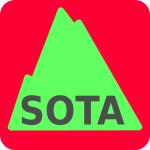Name:
EB2GKK/P
Station ID:
193598
Source:
Symbol:
 Summits on the air
Summits on the air
Latest Packet:
Object Packet
Sender:
Receive Time:
1732370545
Age:
1732370545
Path:
APN100,TCPIP*,qAC,NINTH
Comment:
014.089MHz SOTA activation EA2/VI-069
Latest Position:
42.71917, -2.3845
Receive Time:
(Received in latest packet)
Packet frequency:
470s (Latest 3 packets)
Nearby stations/objects:
 EB2GKK-11
10.62 miles
EB2GKK-11
10.62 miles
 ED2ZAJ
15.31 miles
ED2ZAJ
15.31 miles
 EA2FDW-10
15.35 miles
EA2FDW-10
15.35 miles
 ED2YAP-10
15.41 miles
ED2YAP-10
15.41 miles
 145.650VI
15.46 miles
145.650VI
15.46 miles
 EA2FDW-7
15.66 miles
EA2FDW-7
15.66 miles
 EA2ETV-10
15.69 miles
EA2ETV-10
15.69 miles
 EA2FBA-7
16.09 miles
EA2FBA-7
16.09 miles
 EA2FBA-10
16.17 miles
EA2FBA-10
16.17 miles
 EA2/VI026
16.89 miles
EA2/VI026
16.89 miles
 26D00
17.82 miles
26D00
17.82 miles
 EA1RCR
18.2 miles
EA1RCR
18.2 miles
 CARIF
18.41 miles
CARIF
18.41 miles
 P-EA1IYZ
18.42 miles
P-EA1IYZ
18.42 miles
 EA1FVM
18.51 miles
EA1FVM
18.51 miles
- The specified "Station ID" is the ID that this station has on this website, this ID is useful when creating a link to this website. Read more in the About/FAQ.
- To get a better understanding of the APRS path I recommend reading the explanation written by wa8lmf.
- If this packet has the "Posambiguity"-mark it means that the sent position is ambiguous (a configured number of digits has been truncated from the end of the position).
- PHG stands for Power-Height-Gain (and directivity). The height is not the height above sea-level, it is the height above average terrain (HAAT = Height Above Average Terrain). PHG is used to calculate the relative RF range of a station. If this station has reported several positions or symbols the PHG data will only be used for the position and symbol used in the PHG-packet.
- RNG is the "pre-calculated omni-directional radio range" of the station (reported by the station itself). If this station has reported several positions or symbols the RNG data will only be used for the position and symbol used in the RNG-packet. It seems like many D-STAR station use the RNG value to specifify D-STAR range.
- One object may be sent by several different senders. On the map they may share the same path, but they all have their own "Station information" modal.
- If station has more than 15 related stations we will only show the 10 closest related stations.
